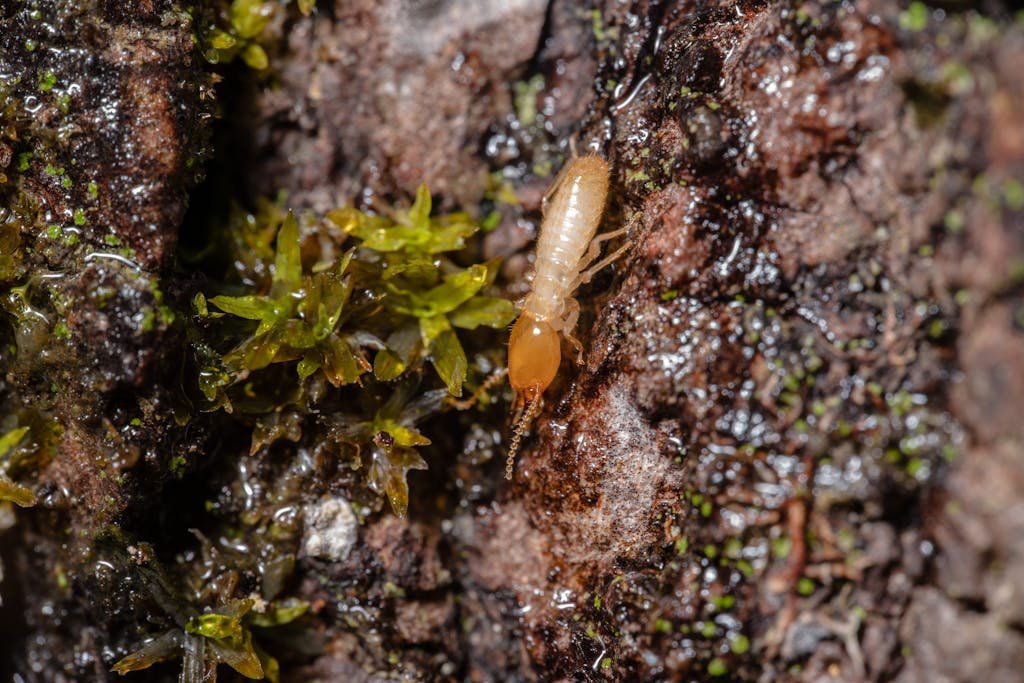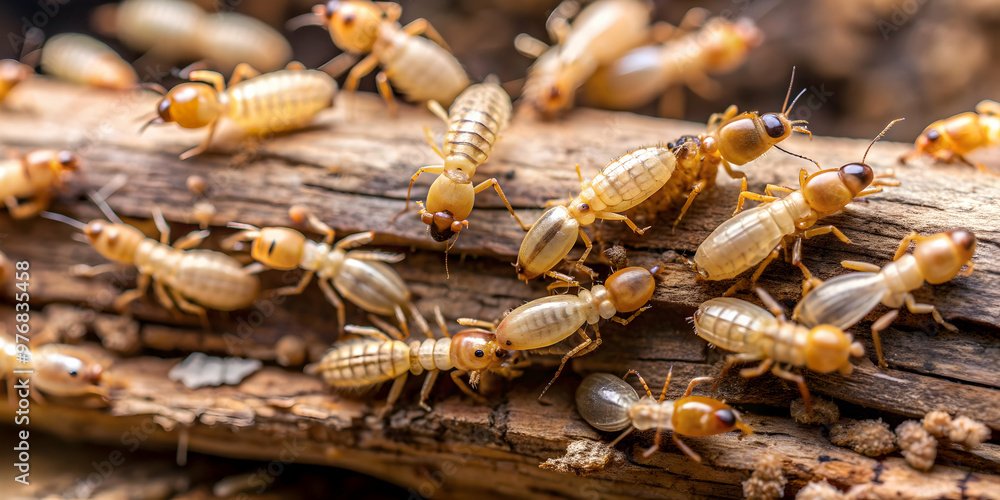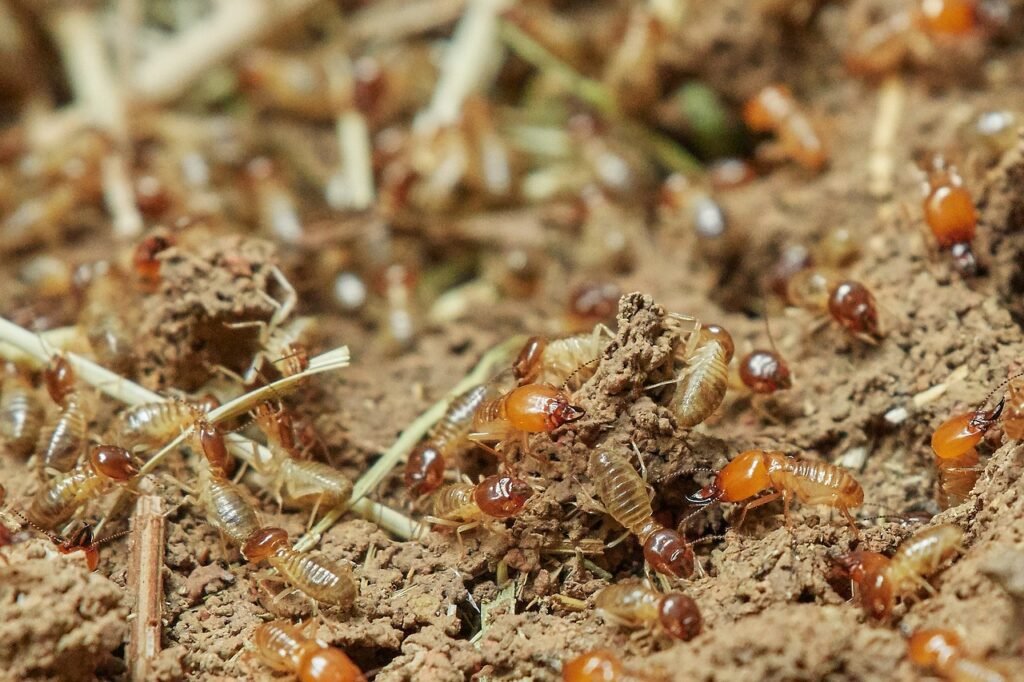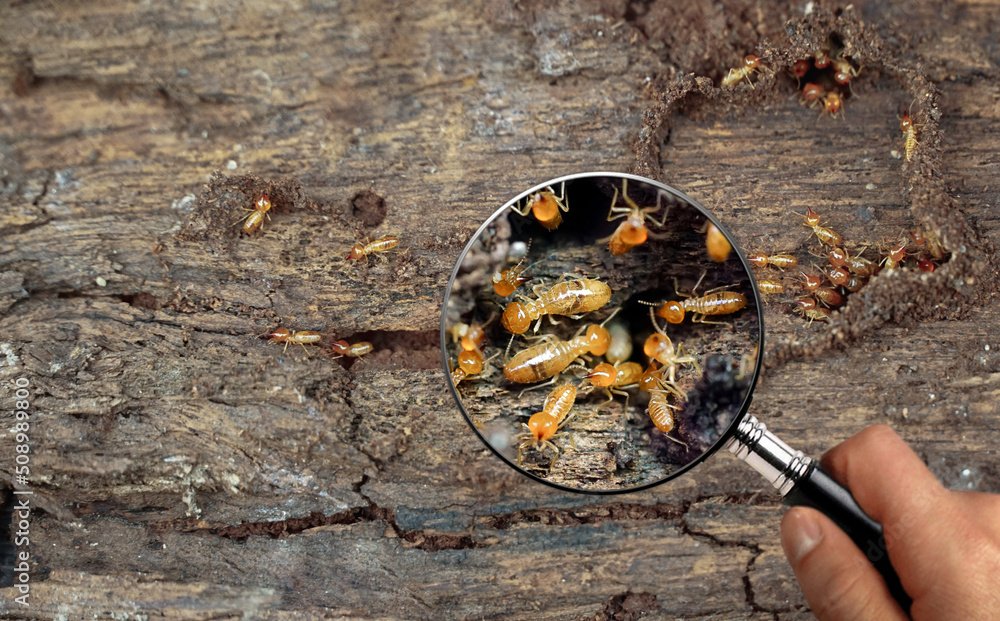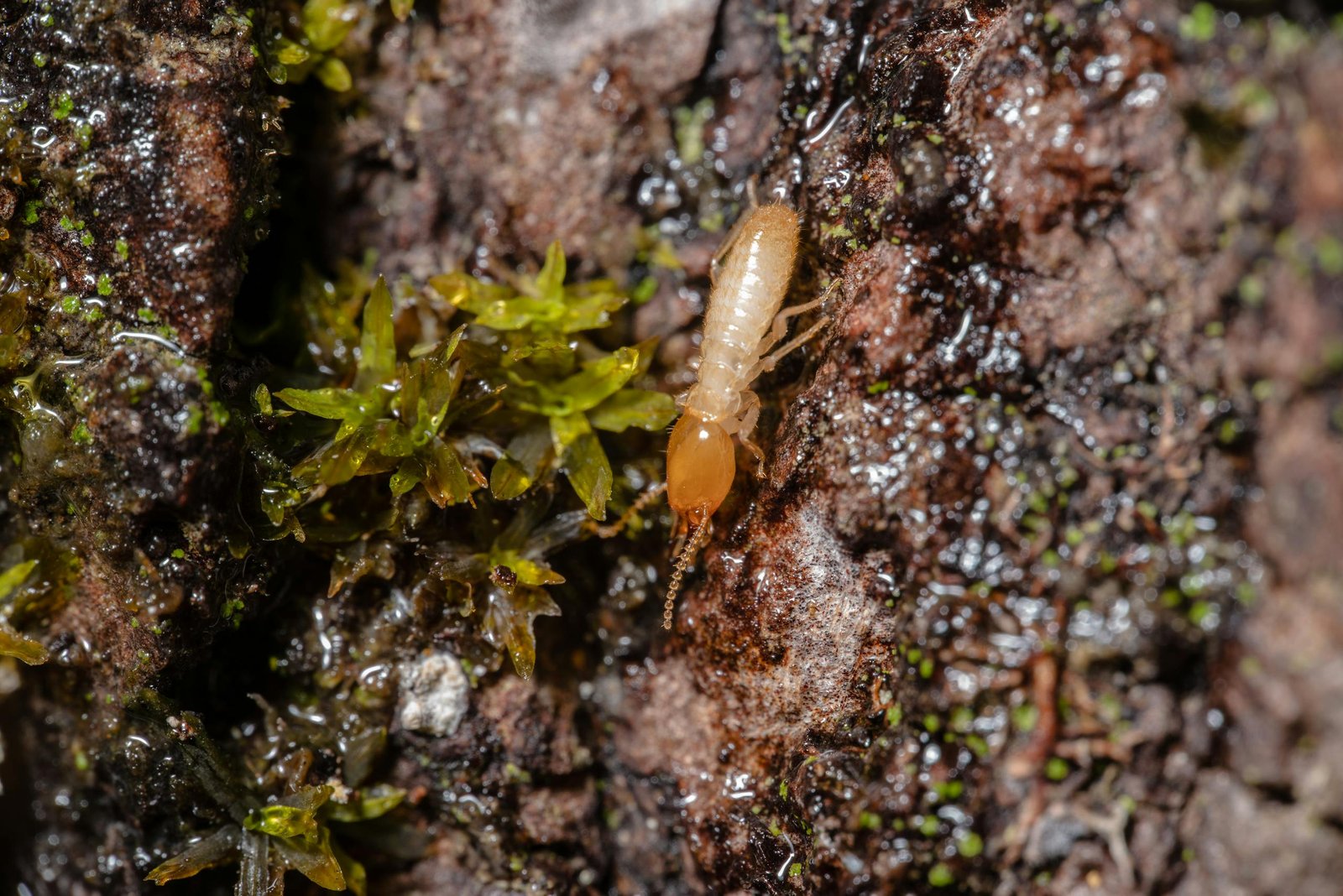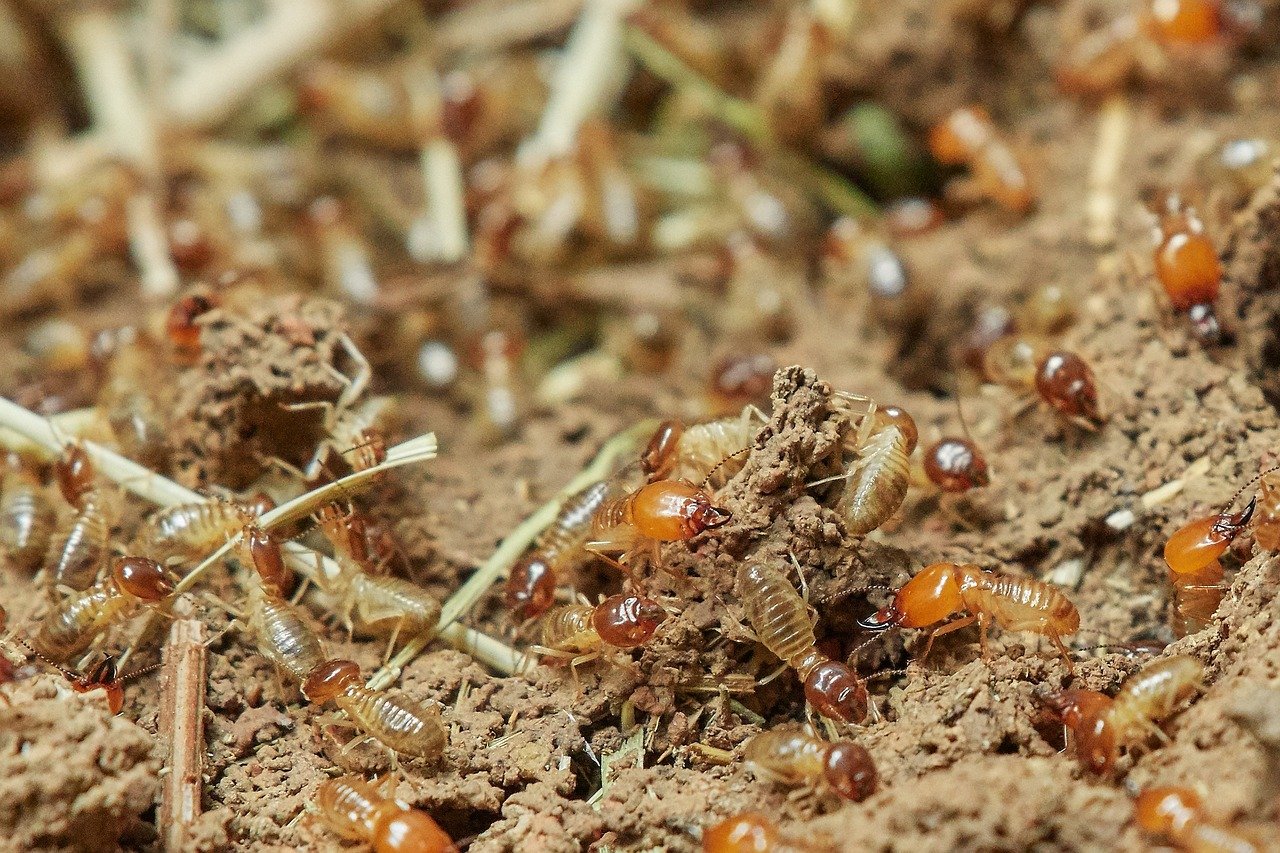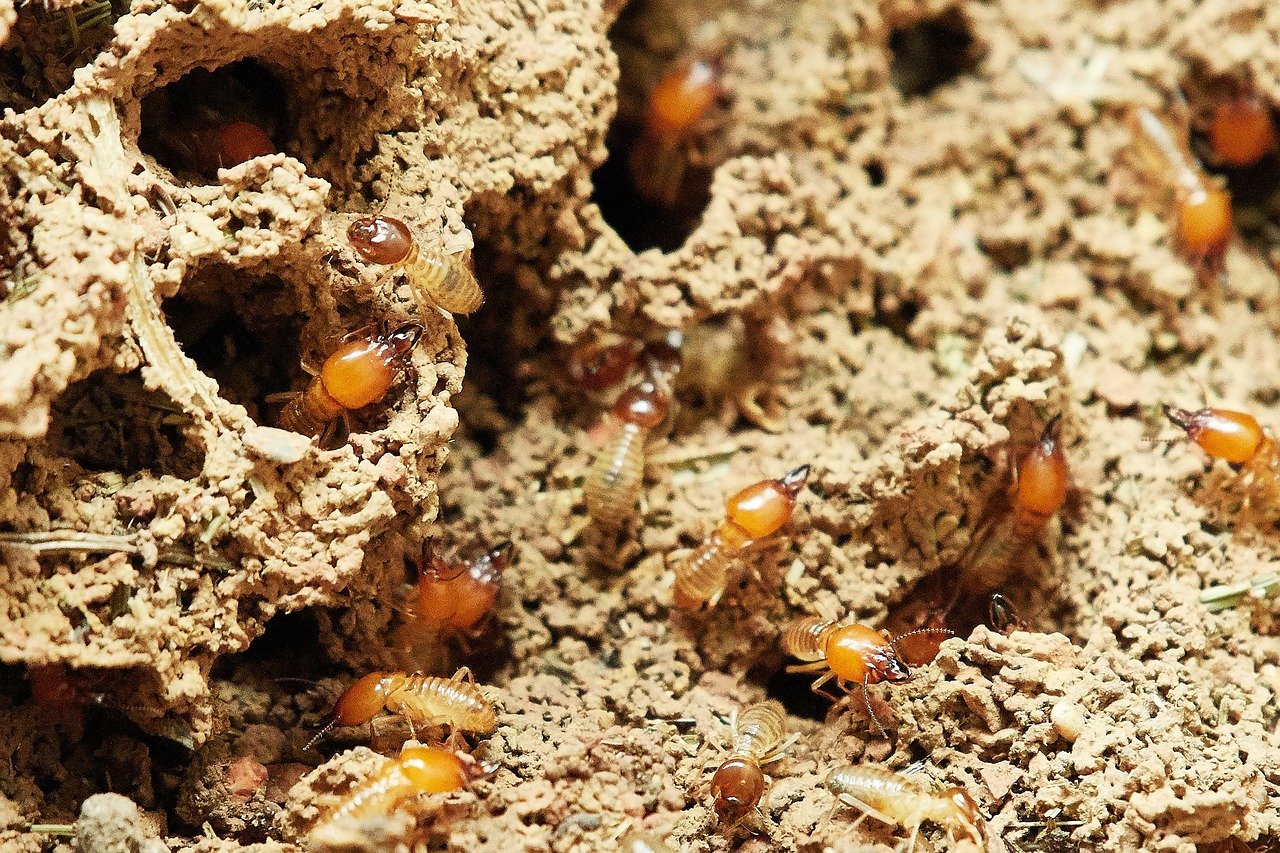Termites
Termites are small, social insects known for feeding on cellulose-based materials like wood, paper, and drywall. They are highly organized, living in colonies with a division of labor among workers, soldiers, and reproductive members (kings and queens)
Appearance
Termites have soft bodies with straight antennae and vary in color from white to light brown. Worker termites are usually lighter in color, while soldiers have larger heads with mandibles for defense. Winged reproductive termites, known as alates, are darker and have two sets of wings.
Life Stages
Termites go through three primary stages: egg, nymph, and adult. After eggs hatch, nymphs develop into different roles (workers, soldiers, or reproductive members) based on the needs of the colony.
Seasonal Activity
Termites are typically more active during warmer months, with swarming (when reproductive termites leave the colony to form new ones) commonly occurring in spring or early summer. However, they can remain active year-round in warmer climates.
Dangers and Risks
Health Risks: Termites don’t pose direct health risks to humans, as they don’t carry diseases. However, their presence can attract other pests that may carry diseases, like ants and rodents.
Property Damage: Termites are notorious for causing significant structural damage to buildings as they consume wood and other cellulose materials. This can lead to costly repairs, decreased property value, and safety hazards if infestations go undetected.
Prevention and Control Tips
This section should include signs to watch for, simple DIY methods, and preventive measures to protect homes or properties from pests.
Prevention Methods
Reduce moisture around the foundation of your home, as termites are attracted to damp wood. Keep firewood and other cellulose materials away from the house. Seal cracks in the foundation and ensure proper ventilation in crawl spaces.
Signs of Infestation
Common signs include mud tubes along foundations, hollow-sounding wood, discarded wings from swarmers, and blistering wood surfaces.
DIY Measures
Use termite bait stations around the perimeter of your home and apply chemical barriers. However, these methods are typically supplementary and not enough for large infestations.
When to Contact a Professional
Professional treatment is crucial for termite infestations, especially if structural damage is suspected or DIY methods fail to control the issue.
Trap Kill’s Approach to Control
Customized Treatment Plans:
Trap Kill provides comprehensive termite control using both pre-construction soil treatments and post-construction chemical barriers. We focus on eliminating existing colonies while preventing new infestations.
Certified, Eco-Friendly Solutions:
Our termite solutions use safe, certified termiticides that protect your property without harming the environment. We also offer monitoring and follow-up visits to ensure long-lasting protection.
